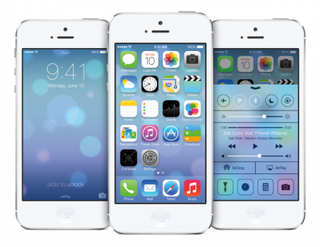
So, it seems as though Tim Cook was serious when he declared Apple was doubling down on secrecy. For the first time in years, we were actually surprised by the bulk of a WWDC keynote, from the audacious Mac Pro to the transcendent iOS 7.
Surprising to approximately no one, however, was the lack of new hardware to run the shiny new operating system. Any iOS release — particularly one with so many radical changes — is going to need a fair amount of beta time before it's unleashed on the public, and there was absolutely no way Apple was going to announce a new iPhone for an old operating system.
So, autumn it is. But if you're hoping for a redesigned iPhone 6, I have some bad news for you: This year's iPhone won't look any different than last year's.
Not too long ago, some very astute writers were wondering whether Apple could get away with another "S" release. For the past two generations of iPhone, Apple has used the year following a redesign as something of a refresh, bumping the specs and adding a feature or two to the existing form factor. It's certainly been a winning formula — the designs have been more than capable of standing the test of time — but Apple's been hit with a rash of negative press lately, and there are those who think nothing less than a jaw-dropping new handset will be a disappointment.
That's where iOS 7 comes in. From the keynote's opening video to its closing commercial, Apple hammered home the point that good design is based on how a product makes you feel, not what it looks like. No matter what iPhone you're using, Apple wants iOS 7 to make you fall in love with it all over again.
Make no mistake: Apple's taking a major risk here. Jony Ive has taken the most familiar and established part of the iPhone experience and turned it on its head. In many ways, it's more daring than a plastic enclosure or a bigger screen. Redesigned iPhones are an easy sell for Apple. With smartphones, everyone wants to be seen with the latest and greatest handset, even if it means breaking their contract or paying full price for an unlocked one, and when Apple releases one, it's practically pandemonium.

But this year is different. No matter what it looks like, the new iPhone will ultimately be judged on the strength of iOS 7, and that's the way Apple wants it. Its subtle animations and depth are designed to complement the sleek precision of the iPhone; much in the way the interface melts away in Safari, iOS 7 is meant to be an immersive experience, to draw you into the screen. (It's no coincidence that all of Apple's screenshots are shot using the white iPhone to match the lighter theme.)
Get daily insight, inspiration and deals in your inbox
Get the hottest deals available in your inbox plus news, reviews, opinion, analysis and more from the TechRadar team.
Simply put, iOS 7 is the new iPhone.
There's an inclination to compare it to OS X — and there certainly are similarities, which I'll explore in a future column — but the iOS 7 redesign is a far different thing. For one, the OS X transition was incredibly gradual. Before Apple deemed it worthy to preinstall on a single new Mac, it went through several notable steps: a series of developer previews, a couple keynote demos, a public beta and the first semi-stable release, which didn't even ship with a DVD player. And that's not to mention the years it booted alongside OS 9/Classic.
And then there's this: During the year of its launch, Apple unveiled a string of seductive designs: Titanium PowerBook, iBook G4, PowerMac G4 "Quicksilver" and the iPod. It's almost as if Steve Jobs was trying to overshadow the release of OS X, and in a way he was. Jobs knew it would be at least another year until it was truly ready for mass adoption, which is why even new Macs that had OS X installed still booted into OS 9 by default.
There's no such roadmap for iOS 7. This is an all-or-nothing release, and Apple needs it to be the star of the show. Like OS X, iOS 7 will make our iPhones feel brand new again, whether they have an "S" in their name or not.
The new iPhone will surely have a few exclusive features that people will need to have. There will be a better camera, and who knows, maybe that fingerprinting-unlock mechanism we keep hearing about will find its way in as well.
But as far as looks go, there won't be anything new. And something tells me that won't matter one bit.
Find Michael Simon on Twitter or App.net @morlium.
